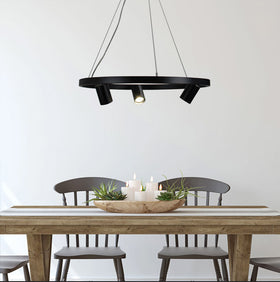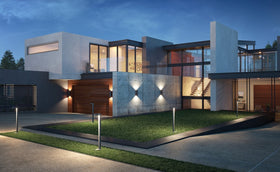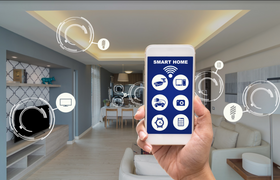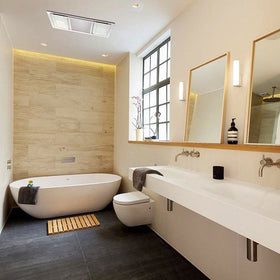
Read this before you upgrading your LED Lighting
What are LEDs
Light-emitting diodes, better known as LEDs, are one of the most energy-efficient light sources today. This light technology produces light which is 90% more efficient. Good quality LED light bulbs are more durable, offer better light quality and last longer than any other lighting source.
How an LED bulb works
LED bulbs are fitted with microchips. An electrical current passes through this chip and illuminates numerous miniature light diodes which together emit visible light. The heat of the LEDs are absorbed into a heat sink and dissipated into the surroundings, to maintain high performance of the bulbs. Thermal management is what gives the LED lights a longer life support.
Did You Know?
- LED, is a solid-state of lighting. It uses a semiconductor and changes electricity into light. LED bulbs are more energy efficient than traditional incandescent lights and reduce energy consumption by 80%-90%.
- A good-quality LED bulb can produce more than 25,000 hours of light and can, therefore last 25 times longer than traditional light bulbs. Calculatively, if run for 24/7, an LED bulb can still last up to 3-4 years.
- Incandescent bulbs give out 90% of their energy as heat. LEDs are way more energy-efficient and waste very little heat.
- LEDs are widely used in a variety of lightings because of their unique properties. They are usually break-resistant, compact size, easy to maintain and give out focussed light in one direction, minimising light diffusion.
- LED technology contains no mercury and leaves smaller carbon footprints. They are more eco-friendly than incandescent bulbs.
- LEDs do not really burn out. They go through ‘lumen depreciation’ which means that the brightness reduces slowly over time. The life of an LED light is defined by output decrease of 30%.
Uses of LED lighting
LED Downlights for residential indoor
Modern decor combines aesthetics with utility. The LED Downlights for residential indoors portray good looking lighting options with highly efficient energy usage. LED downlights are perfect for highlighting a desired area with focussed and effective lighting. When designing a house, it is imperative to keep in mind, a low maintenance cost and LED lights efficiently reduce electricity bills.
LED outdoor lighting
LEDs are an ideal choice for all commercial, residential and industrial outdoor lighting needs. They offer the same benefits as indoor lighting while minimising maintenance and replacement costs. Lights in the garden, on the porch, over the front door, at the factory gate, in the commercial complexes etc, all need to be run overnight if possible for safety and security. LED lights have longer life with high energy-efficiency, reducing electricity costs by nearly 80%.
LED lighting for commercial use
Commercial complexes like malls, movie theatres, restaurants, pubs as well as office complexes and round-the-clock work spaces are high on electrical requirements. The energy consumption is huge and therefore needs to be contained with the highest efficiency. LED lighting for commercial spaces is an ideal choice for cost management, light and energy efficiency as well. They less load on the environment and are much more eco-friendly than other CFL or incandescent lighting.
Benefits of LED Lighting
Energy Savings
As mentioned before LEDs consume a lesser amount of power than most other lighting sources. LED lights can save up to 80% in recurring annual energy costs. Energy efficiency of various lighting solutions are based on two factors, luminous efficacy or useful lumens. These two factors basically determine the amount of light emitted per unit of power that is consumed by the bulb. LED lights are focussed and have minimal ‘waste light’. LED lights have been known to have a higher energy-efficiency over all other lighting sources like CFL, Fluorescent lights, HID, HPS, LPS and incandescent lights. LEDs also operate on very low voltage.
Low maintenance
Due to higher efficiency and longer life, the LED bulbs require less maintenance and less frequent replacements. With an average operating hour 25,000-50,000 hours, one can pretty much forget about any lighting issues for a couple of years with LED lighting.
Smart control
Most LED lights today are moving ahead with technology and are smart controlled. Be it a remote control or an app on the phone, these lights are easily accessible from anywhere. Switching them on or off, dimming or brightening the lights, it can all be controlled remotely through buttons, apps and voice control. Apps like Lumenplay or LampUX are especially designed to manage LED lightning through smart control.
Lumens instead of Watts
Watts (W): Watts are the most common standard International unit for measuring power as rate of energy that is transferred or consumed.
Lumens/Watt (Lm/W): Lumens/watt are the units of luminous efficacy. A lumen is the amount of visible light emitted by a given bulb. Lumens/Watt indicates the amount of visible light the bulb emits for a given amount of energy required to generate it. It is a simple measure of energy efficiency where the higher the value the more efficient the light. With focussed light and dispersed heat LED lights have higher luminous efficiency, resulting in a 60-75% improvement in overall energy efficiency.
CRI and Colour temperatures
Colour Rendering Index or CRI is the ability of light to reveal the actual colour of an object as compared to natural light. High CRI is desirable and LEDs generally have high ratings of CRI. For example, sodium vapor lamps have very poor CRI and almost portray monochromatic colour. LEDs are good for pictures as they portray colours as close to the true shades as possible.
LEDs are available in a plethora of correlated color temperature (CCT) values. They have options like ‘warm’ as in a yellowish glow, or a ‘cool’ for white lights, and a variety of other options.
Extended life span
A winner hands down, the lifespan of the LED lighting is known to be way longer than the traditional lighting solutions. An average LED lasts 25,000-50,000 operating hours and some high-end ones up to 100,000+ operating hours. That is nearly double to four-times the life of a metal halide, fluorescent or even vapor lights. Needless to say, an LED lasts about 40 times longer than an average incandescent bulb. This means less frequent replacements, more cost-effective, low maintenance and more energy-saving.
Safety
Safety is probably the most under-rated advantage of LED lighting. The biggest hazard of lights is the emission of heat. Traditional incandescent bulbs convert nearly 90% of the total power energy used, directly into heat. This means only 10% energy is actually powering the light. LEDs consume less power and can therefore work effectively on low-voltage electrical systems. The heat emitted from the LEDs are absorbed in a heat sink and dissipated into the surroundings. This is much safer in the event of a mishap.
Conclusion
LED lighting is by far the most sought-after illuminating option in the world of modern interiors and decor. It is cost-effective, energy-saving and planet friendly. LEDs have not stopped their growth by simply bringing light cheaper and hassle-free to our lives but is a constant upgrading technology with many new features. Though initially a wee bit more expensive than the traditional incandescent lighting options, LEDs are definitely a smart, long-time lighting preference.







